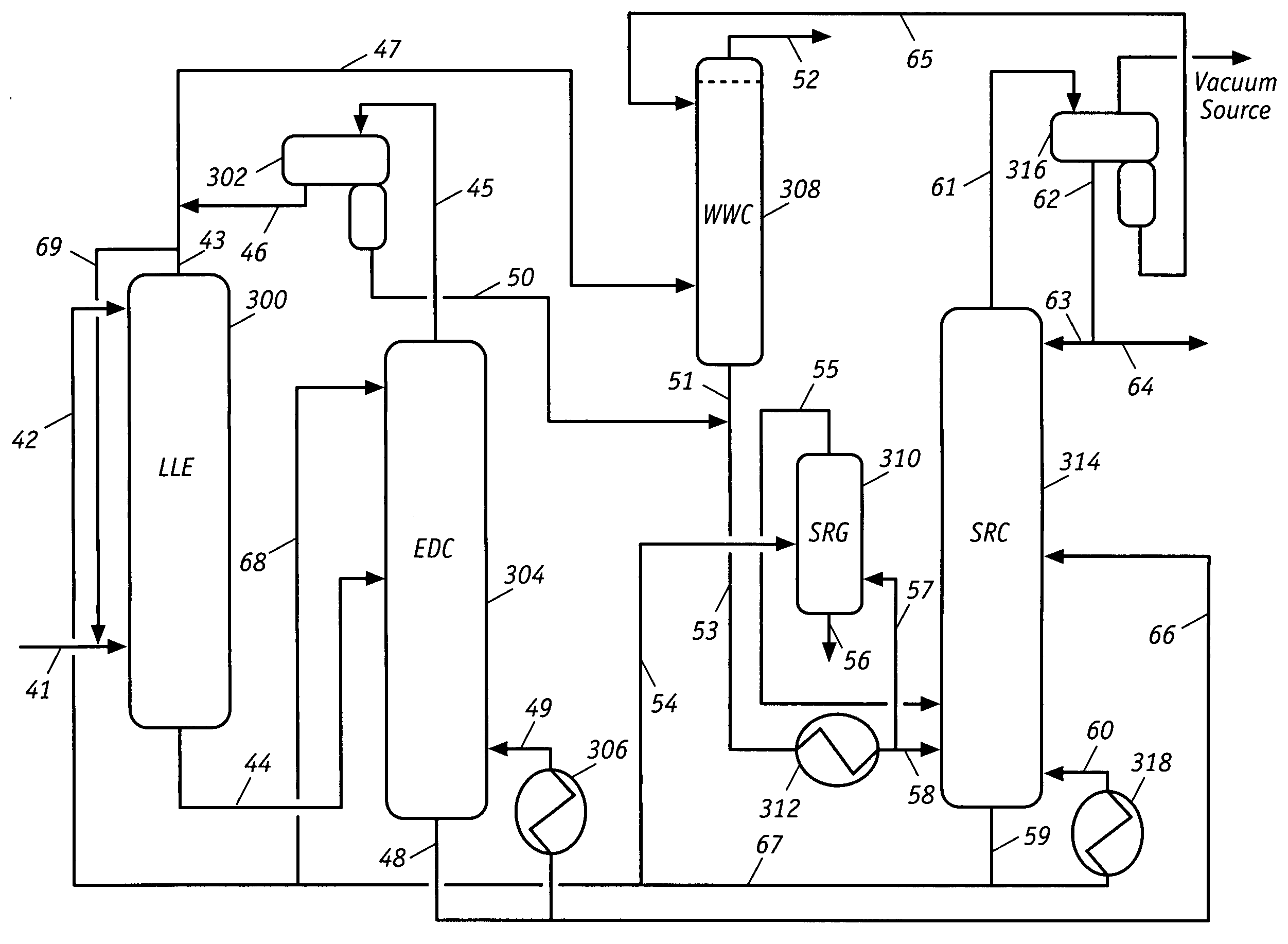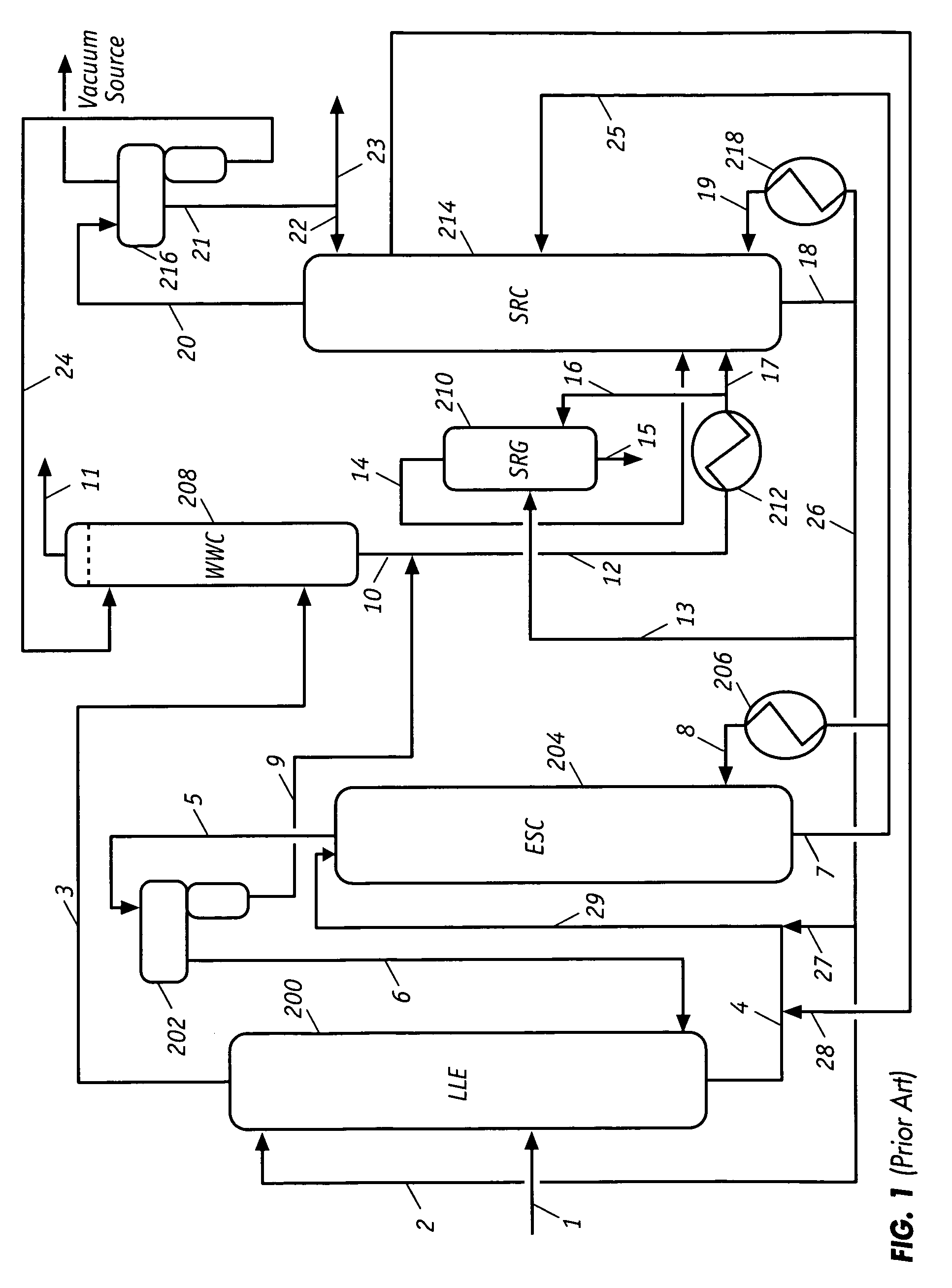Novel energy efficient and throughput enhancing extractive process for aromatics recovery
a technology of aromatics and throughput, applied in the field of energy efficient processes for aromatics recovery, can solve the problems of consuming a significant amount of vaporization energy, high energy consumption of steam, light non-aromatic hydrocarbons, etc., and achieves satisfactory aromatic purity and recovery. , the effect of reducing total non-aromatics and easy operation of the modified ed
- Summary
- Abstract
- Description
- Claims
- Application Information
AI Technical Summary
Benefits of technology
Problems solved by technology
Method used
Image
Examples
example 2 (
The Inventive Process—Revamped Case)
[0041]This example demonstrates that the energy consumption of the ESC is substantially reduced by converting it into a modified EDC that is operated without reflux and by totally eliminating the reflux from the ESC to the LLE column. In addition to a large reduction in energy consumption, throughput of the revamped process consisting of the LLE and the modified EDC is also significantly increased. Because the revamp can be accomplished with minor piping modifications, the user has the flexibility of reverting to the original process configuration where necessary.
[0042]Referring to FIG. 2, one thousand (1,000) Kg / Hr of hydrocarbon feed at 75° C. and 6.4 Bar is fed continuously to a location near the bottom of LLE column 300 via line 41. This stream has essentially the same composition as that of the LLE feed in example 1. Twenty one hundred (2,100) Kg / Hr of sulfolane solvent containing 0.8 wt % water at 81° C. and 6.4 Bar are introduced to the upp...
PUM
 Login to View More
Login to View More Abstract
Description
Claims
Application Information
 Login to View More
Login to View More - R&D
- Intellectual Property
- Life Sciences
- Materials
- Tech Scout
- Unparalleled Data Quality
- Higher Quality Content
- 60% Fewer Hallucinations
Browse by: Latest US Patents, China's latest patents, Technical Efficacy Thesaurus, Application Domain, Technology Topic, Popular Technical Reports.
© 2025 PatSnap. All rights reserved.Legal|Privacy policy|Modern Slavery Act Transparency Statement|Sitemap|About US| Contact US: help@patsnap.com



